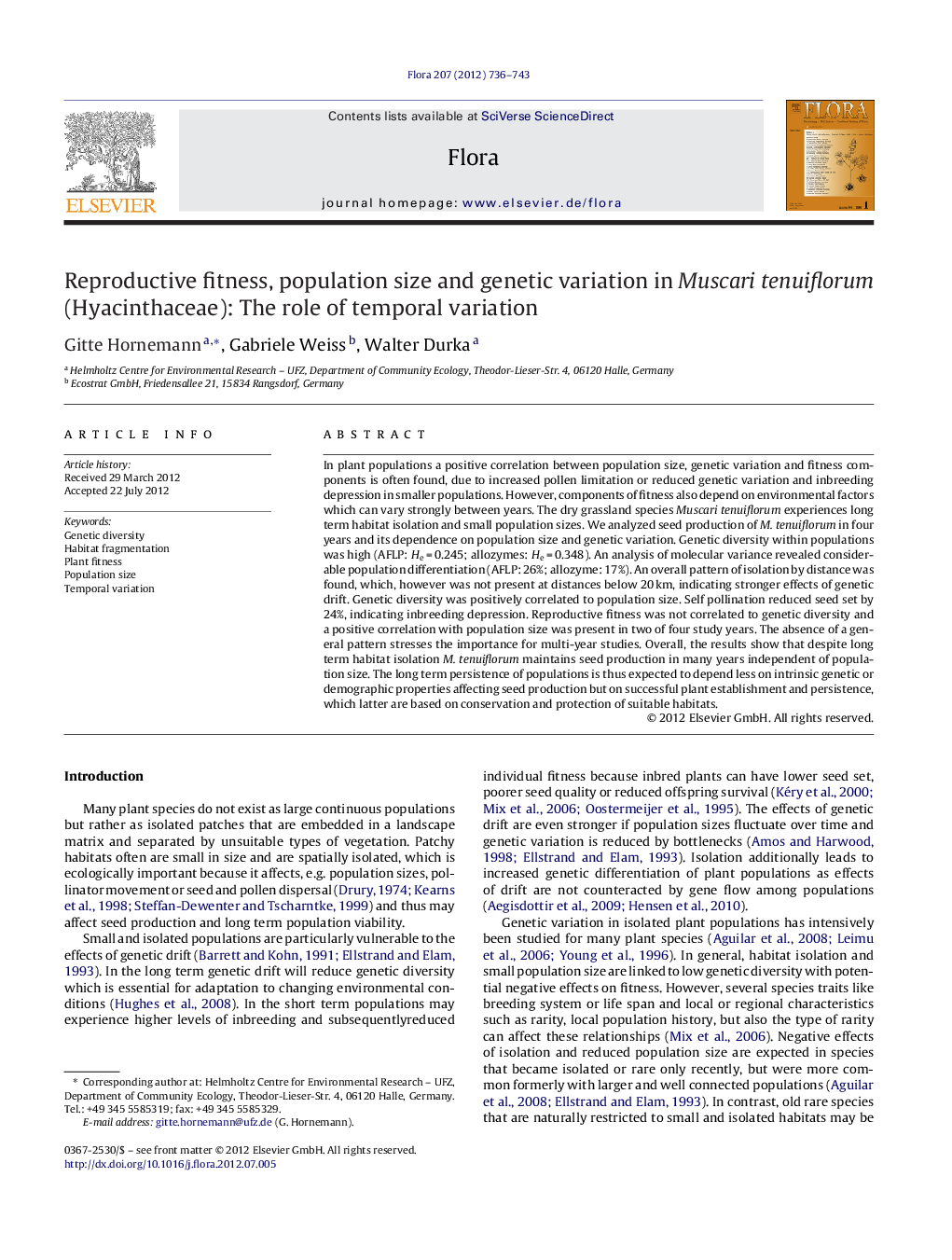| Article ID | Journal | Published Year | Pages | File Type |
|---|---|---|---|---|
| 2179585 | Flora - Morphology, Distribution, Functional Ecology of Plants | 2012 | 8 Pages |
In plant populations a positive correlation between population size, genetic variation and fitness components is often found, due to increased pollen limitation or reduced genetic variation and inbreeding depression in smaller populations. However, components of fitness also depend on environmental factors which can vary strongly between years. The dry grassland species Muscari tenuiflorum experiences long term habitat isolation and small population sizes. We analyzed seed production of M. tenuiflorum in four years and its dependence on population size and genetic variation. Genetic diversity within populations was high (AFLP: He = 0.245; allozymes: He = 0.348). An analysis of molecular variance revealed considerable population differentiation (AFLP: 26%; allozyme: 17%). An overall pattern of isolation by distance was found, which, however was not present at distances below 20 km, indicating stronger effects of genetic drift. Genetic diversity was positively correlated to population size. Self pollination reduced seed set by 24%, indicating inbreeding depression. Reproductive fitness was not correlated to genetic diversity and a positive correlation with population size was present in two of four study years. The absence of a general pattern stresses the importance for multi-year studies. Overall, the results show that despite long term habitat isolation M. tenuiflorum maintains seed production in many years independent of population size. The long term persistence of populations is thus expected to depend less on intrinsic genetic or demographic properties affecting seed production but on successful plant establishment and persistence, which latter are based on conservation and protection of suitable habitats.
